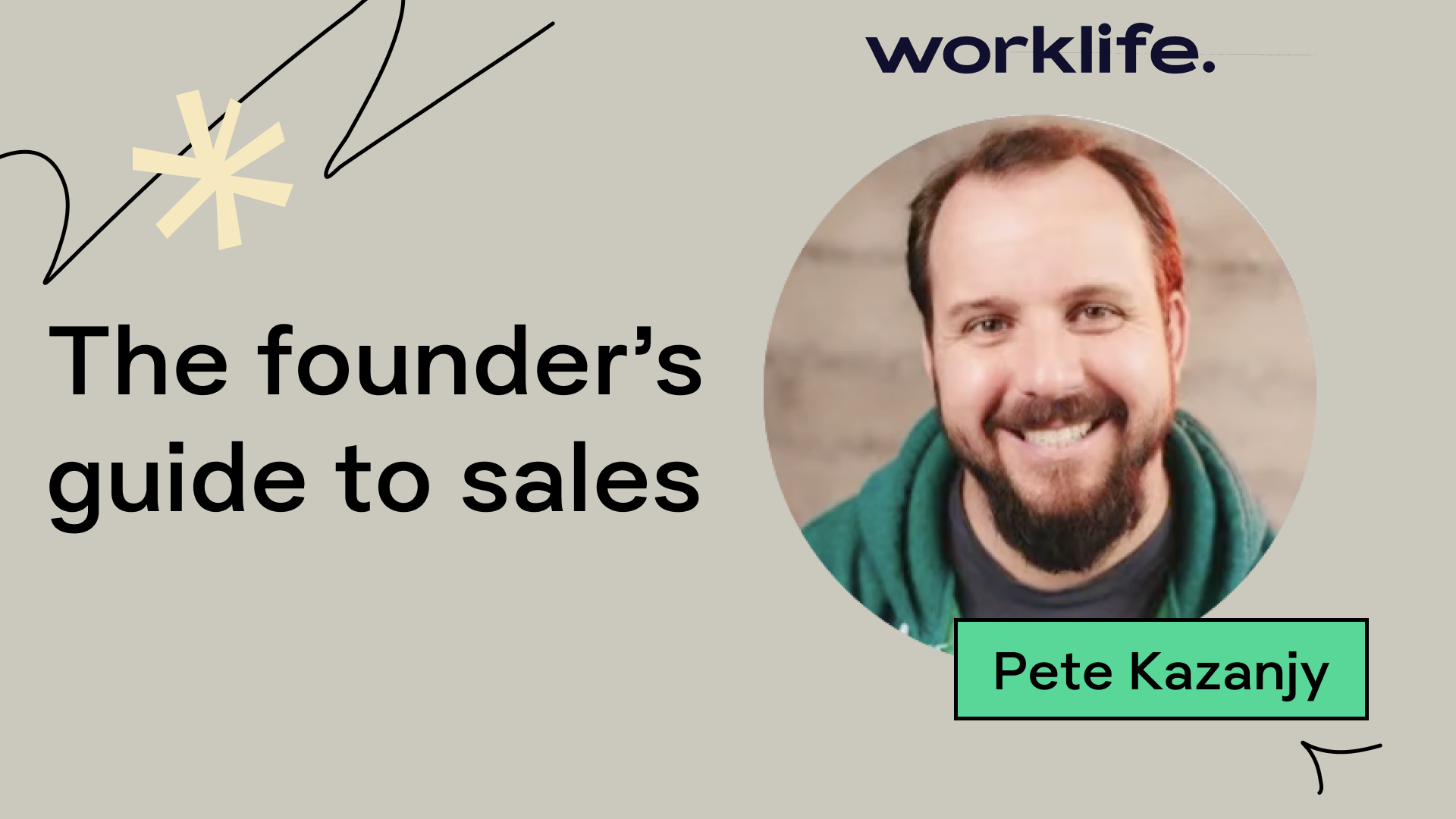In October 2020, Worklife launched our first annual meeting: Now, New, Next. Through this series, we synced with musicians, founders, authors, and game-changers in all fields to explore themes emerging in a rapidly changing world. Couldn’t join? Not a problem. We’re sharing the info here just for you. Today we’ll discuss how to raise capital for a startup outside of traditional VC.
Venture capital has historically been a bit of a cottage industry.
2018 data from Richard Kerby (Equal Ventures) showed that 58% of venture capitalists were white men. Following that:
- 20% were Asian men
- 11% were White women
- 6% were Asian women
- 2% were Black men
- 1% were Black women
- 1% were Latinx men
- <1% were Latinx women
Plus, a whopping 60% of venture capitalists attended Stanford or Harvard. On top of that, the numbers get even worse when you investigate who manages VC dollars. 93% of these shares are controlled by white men.
Despite the bleak stats, the good news is that the venture capital landscape is changing. Angels and solo capitalists are striking out on their own, away from traditional funds. Many are even working in a way that displaces physical locale as a prerequisite for funding.
We're seeing now more than ever that the venture community is increasingly distributed. We have more VCs taking pitches over zoom. We have angel investors that are working remotely or returning to their home country. The early stage funding ecosystem is in the midst of a shakeup and the definition of founder is changing.
As founders evolve, so do the paths they can take to connect to capital. We invited innovators to share their thoughts on this shifting space. Guests included:
- Karen Cahn: founder & CEO iFundWomen, a funding marketplace where women can access capital, receive coaching, and network with other founders.
- Harry Hurst: founder & co-CEO at Pipe, a “trading platform that enables companies to transform recurring revenue into up-front capital.”
- Alek Koenig: founder & CEO of Settle, a cash flow management platform that makes invoicing, bill paying, and financing easy for e-commerce companies by providing capital upfront.
As a group that’s raised a collective $664 million in funding, has experience building platforms from the ground up, and demonstrates a persistent dedication to seeing startups thrive, Cahn, Koenig, and Hurst have key insights that new founders won’t want to miss.
How to Raise Capital for Startup Outside Traditional VC
The face of venture capital is rapidly changing. At worklife, we’re a great example of this; we’re a fund managed by a marketing executive turned angel investor turned solo venture capitalist. We invest in creators, designers, DIYers, and people building businesses from their kitchen table.
Traditional paths of accessing capital aren’t always right for these innovators. In fact, the standard is changing for all founders. Flying out to San Francisco to meet with a series of firms is no longer the only route. Many founders looking for non-dilutive funding can connect with this online through
- grants,
- crowdfunding,
- and platforms like Pipe, Settle, and iFundWomen.
We turned to the panel for a closer look at this funding shift and to find out where venture has not met the needs of the individuals using Settle, Pipe, and IFundWomen?
Coaching Startup to Raise Capital
Cahn kicked the discussion off by sharing stats about a significant subset of underappreciated, underfunded founders: women.
“For female-founded startups, raising VC is so much harder,” Cahn said. In 2019, female-founded companies had “a 2.8% piece of the VC pie.” Female founders of color had less than 1%. Since then, female-only founders raised 6.37B in 2021 compared to 3.47B in 2020. While the numbers look decent, PitchBook reported that this represented only “2% of all venture capital dollars in 2021—the lowest percentage since 2016.”
To bridge this giant gap, Cahn and the IFundWomen team must innovate. “We have to think differently,” she said. “Women get their businesses funded differently and it's much more communal.”
The first step here is education. Through their platform, IFundWomen connects founders to career coaching at price points ranging from $9/month to $1,499/year. The goal is to arm founders frequently left out of the funding arena with critical information for successfully running a business. Coaches teach women:
- How and why to set up Google Analytics
- How to use Facebook retargeting ads
- How to build a cheap MVP
This program has had success across the board: the IFundWomen team reports that founders who receive their coaching raise 27X more than founders who did not. That number includes entrepreneurs who raised funds on Facebook or Kickstarter, meaning that education was the critical factor, not source of capital.
Hurst, founder and co-CEO of Pipe, said he could not have agreed with Cahn more on the importance of education. He explained that founders whose only stream of info comes from Silicon Valley blogs, Y Combinator, and the other usual suspects too often view raising as a linear, one-size-fits all process of countless rounds eventually leading to IPO.
“It's just not fundamentally not true,” he said. It all depends on the founder and what they are looking for. “There is absolutely nothing wrong with bootstrapping a company.”
Cahn’s team focuses on teaching founders how to build strong, profitable businesses through immediate monetization. “The best source of funding is revenue,” Cahn said. “Period, full stop.”
“Again, couldn't agree more with Karen,” Hurst said. “Your revenue is your absolute best way of financing your business and Pipe just turbocharges that by pulling the cash flow forward and allowing you to offer more flexible payment terms. But it's still your revenue.”
Ways to Raise Capital for Startup: VC and Non-Dilutive Funding in Tandem
While Cahn, Hurst, and Koenig are changing the landscape by challenging the idea that venture capital is the best way to raise capital for a startup, they don’t see their platforms as VC competitors. Instead, they work in tandem with traditional VC.
Pipe’s intention, for example, was never to displace early stage venture. In fact, Pipe’s team sees pre-seed and seed stage funding as a perfect fit for many founders. Pricing a company can help startups:
- Attract talent
- Go to market faster
- Find product market fit quicker
- Provide job security to the early team
This is especially true for founders working with supportive early stage partners, like us. Rather than skipping this step, many members of Pipe, Settle, and IFundWomen leverage those platforms to add more to their capital stack. It’s mutually beneficial for investors and founders, Hurst said.
Through Pipe, SaaS founders can turn MRR into ARR and then treat this as a tradeable asset. This puts more control in founders' hands by taking away worries about cash flow. It’s also beneficial for investors who have pro-rata rights, because it means they don’t “have to deploy capital into the same company to maintain the same ownership,” Hurst explained.
Koenig, founder and CEO of Settle, described a similar symbiotic relationship between VC and his invoicing platform. He explained that many companies come to Settle because they are introduced by angels and VCs. These individuals see Settle as additive, because they connect e-commerce companies and CPG companies to capital when they are scaling and need to fund operations or marketing.
The crux of the matter is that when founders need money, they don’t always need enough to warrant raising another round. “Angels that introduce us to these companies, really find that if we could make them more capital…[it will] increase higher multiples on their own investment [and] keep more of the company for the actual founders of the company,” Koenig said. At the end of the day, he thinks that’s what matters most.
Raise Startup Capital: Path to VC
Because of platforms like Settle, Pipe, and IFundWomen, contemporary founders have three choices:
- Bypass traditional VC by bootstrapping, crowdfunding, or raising through other non-dilutive sources
- Pair traditional VC with non-dilutive funding sources
- Use non-dilutive sources as a path to VC
All are viable options, so long as founders are fully informed and financially secure.
Because VC is so speculative, Hurst said, founders need to have a tight understanding of their capital stacks and the economics of their business. This allows them to take that risk into speculation. On top of that, founders should be clear on how much ownership they are willing to surrender. To get to this place of clarity, founders should seek out solid mentorship and information.
Hurst shared two examples to illustrate the huge range of outcomes that VC generates:
- A $50 million exit. Founder maintains 80% ownership and nets $40 million.
- A $1 billion exit. Founder raised this through 10 rounds. Founder owns 4% of the business and nets 50 million.
While Hurst explained that both options are viable, the first was likely an easier process with the same return. For this reason, it's important that a founder aligns their funding methods with their goals. This means being informed about the outcomes of different capital sources early on in the process. Hurst emphasized that early decisions about who founders take money from can have long-lasting effects.
“If a founder isn't dedicated to delivering venture scale returns, they shouldn't be taking money from a venture capitalist, because that's the expectation that's put on them,” he said. “If you've committed to delivering venture scale returns, you're going to have to grow your company faster than if you just raise from friends and family or bootstrap a company.”
How to Raise Capital for a Startup Company: Networking
When it comes to choosing investors for your startup, capital goes far and connections go farther. IFundWomen makes sure to use this to the advantage of both their investors and founders.
The team created a program that connects brands and institutions to founders. They do so through their database—the largest database of women-owned businesses globally. Info stored there includes:
- PII
- Annual revenues
- Number of FTEs and PTEs
- Location
When IFundWomen partners with institutions, they can pull from their databases to connect potential investors with women in niche markets. For example, P&G ventures connected with IFundWomen to find scientists and technologists in categories like active aging and menopause.
The IFundWomen team went into their database to connect P&G ventures with women in their member base. P&G Ventures was blown away by how many people were working in this space. IFundWomen had successfully done a pipeline for them, which also benefited their own members in niche categories.
For IFundWomen members with secure sources of capital, connections to potential investors are opportunities to find a great partner fit. Hurst summed this up succinctly: “The most leverage you can have as a founder is not needing the money, but choosing the right partner.”
How to Raise Capital for a Startup: Democratizing the Process
For founders deep in the research on how to raise capital for a startup, the key takeaways from Koenig, Hurst, and Cahn are these:
- Approach funding informed: don’t skimp on coaching and education
- Be open to multiple pathways: non-dilutive funding and VC can be complementary
- Leverage your network: there are likely investors looking to fund in your niche
- Keep the long-term in mind: decisions you make while raising have long-lasting impacts
At Worklife, we are very optimistic about the future of both venture capital and the new wave of founder-friendly financing. We're starting to see new funds, new ways of raising non-dilutive capital, and more choice for founders. We’re happy to be a part of this space.
It’s an exciting time for founders investigating how to raise capital for a startup business. To learn more, check out:
- 3 Ways to Activate Your Army of Investors
- 5 Lessons from Tandem on Raising a $7.5 Million Seed Round and Rising to the Occasion in Uncertain Times
- Career Coaching Should Become a Standard Perk—Here’s Why
- How David Sacks Built the First Bottom-Up Playbook for Enterprise






